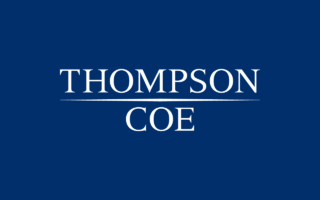Texas Supreme Court Clarifies Employer Liability in Trucking Accident Cases
By Elizabeth Z. Brabb, Wade C. Crosnoe, Cassie J. Dallas, Michael W. Eady • Jun 30, 2025
The Texas Supreme Court issued its long-awaited decision in Werner Enterprises, Inc. and Shiraz A. Ali v. Blake on June 27, 2025. We now have some clarity regarding employer liability in trucking accident cases and further clarity regarding when a driver’s alleged negligence is not a cause in fact of the accident or injury but is instead the product of happenstance of place and time.
This trucking accident case has a long procedural history that dates back almost a decade. The Blakes obtained an over $90 million dollar judgment against Werner and its driver. On appeal, the Texas Supreme Court, in an opinion authored by Justice Blacklock and joined by five other Justices, reversed and rendered judgment in favor of Wener and its driver. Justice Young, joined by Justice Huddle, wrote a separate concurrence. The remaining three Justice dissented, in part, agreeing that while the judgment should be reversed, the case should instead be remanded for a new trial as a result of error in the court’s charge.
The accident facts are known to all who have followed this case and its tortured path through the Court of Appeals, which in an en banc opinion affirmed the jury’s verdict. The accident occurred on December 30, 2014, near Odessa. The I-20 icy road conditions that day were hotly contested. What happened was not. Trey Salinas, with Jennifer Blake and her three children as passenger, was driving eastbound when he lost control of his vehicle, sending it across the divided medium, and into the path of an oncoming Werner truck. The jury found both Werner and its driver, Ali, liable for the crash. The jury apportioned 70% of the responsibility for causing the Blakes’ injuries to Werner employees other than Ali, 14% to Ali, and 16% to Salinas. The jury awarded Jennifer Blake $16,500,000, Nathan Blake $5,000,000, and Brianna Blake $68,187,994.
Majority Opinion
Five Justices joined in the Court’s decision to reverse and render judgment for Werner and its driver. It was anticipated that this case would be decided based upon the existence or non-existence of a legal duty owed by Werner’s driver to either slow down or not be on the road at all, to prevent what happened that day. The majority, however, viewed the legal issues differently, holding as a matter of law Ali’s negligence was not a proximate cause of the crash. Proximate cause has two proof elements: (1) cause in fact, and (2) foreseeability. The first, cause in fact, also has two components: (1) “but-for” causation, and (2) “substantial-factor” causation. The majority ultimately decided the case based upon the failure to prove that Ali’s conduct was a substantial factor in causing the crash.
Proof that the defendant’s conduct is a substantial factor in causing the plaintiff’s injuries requires more than proof that the defendant is by happenstance in the wrong place when the accident occurs. “Given a proper understanding of substantial-factor causation—an understanding consistent with the jury charge given in this case—no reasonable juror could assign responsibility for these injuries to anyone other than the driver who lost control of his vehicle and hurtled across a 42-foot median into oncoming highway traffic, thereby causing this accident and these injuries in every legally relevant sense of the word.” Opinion at 12.
In response to the Blakes’ argument that no accident would have occurred had Ali been going 15 mph slower on the icy roadway, the majority held that it “does not account for the requirement of substantial-factor causation, which we conclude is lacking here as a matter of law.” Id. at 15. “Nothing Ali did or didn’t do contributed to Salinas’s truck hitting ice, losing control, veering into the median, and entering oncoming traffic on an interstate highway.” Id. at 15-16. The presence of Werner’s 18-wheeler in its proper lane of traffic on the other side of I-20 at the precise moment Salinas lost control is just the kind of “happenstance of place and time” that cannot reasonably be considered a substantial factor in causing these injuries. Id. at 17. “The only contribution Ali’s speed (or his decision to stay on the road) made to bringing this accident about was that it put him, in that fateful moment, directly in the path of Salinas’s careening F-350…” Id. at 17.
Because Ali’s conduct did not proximately cause the accident, Werner also had no liability under these facts. In answer to the Blakes’ argument that Werner was still liable for negligently training and/or supervising Ali, the majority held “[w]e have not recognized negligent training or supervision as an independent theory of tort liability” Id. at 26. If such claims are viable, the Court noted that they would be derivative, and thus, no different than negligent hiring claims. Id. “[B]ecause Ali’s unsafe driving did not proximately cause the injuries, Werner cannot be separately liable for facilitating Ali’s unsafe driving.” Id. at 27.
Because the Court reversed and rendered judgment based on the lack of evidence that Ali’s conduct was a substantial factor in causing the accident and the Blakes’ injuries, the Court did not reach several important issues raised by the Petitioners.
Concurring Opinion
Justice Young, joined by Justice Huddle, concurred with the Court’s judgment but wrote separately to address one such issue—the “admission rule.” The “admission rule” makes direct liability theories againt an employer (like negligent entrustment training, hiring, and supervision) irrelevant when an employer admits or stipulates that a tortfeasor employee was acting in the course and scope of his employment at the time of accident. Such an admission by an employer has been found to render the submission of derivative “direct” negligence claims againt the employer improper. The intermediate courts of appeal that have recognized this rule have generally viewed “respondeat superior and negligent-entrustment claims [as] mutually exclusive theories of recovery,” such that “acceptance of respondeat superior with respect to the alleged negligence of the tortfeasor leaves no room for derivative-negligence claims.” Concurrence at 3. The concurrence endorses these cases and their reasoning, suggesting that the “admission rule” promotes judicial economy and prevents the erroneous admission of inflammatory evidence and distorted verdicts. Id. at 3-5.
The concurrence also endorses a narrow application of the gross negligence exception to the admission rule. Id. at 6-8. Questioning the “viability of an exception that bars the application of the admission rule where the plaintiff presents evidence of gross negligence,” the concurrence suggests that mere pleading of gross negligence should be insufficient to avoid the admission rule. Id. Although the concurrence recognizes that “[w]hether and how a gross-negligence exception would apply are important questions that this Court will presumably need to address in an appropriate case,” it encourages trial courts to honor the admission rule and to consider it in discovery, as well as in the submission of jury questions on liability and proportionate responsibility. Id. at 8.
Had the “admission rule” been adopted and properly applied in this case, Werner would have been entitled to directed verdict on the direct negligence claims against it, and the jury’s assessment of proportionate responsibility would not have been distorted by questions of Werner’s negligence in the liability and proportionate responsibility questions on the jury charge.
Dissenting Opinion
The dissenting Justices, in an opinion authored by Justice Bland, viewed the issues in a different light. “While the evidence might support some proportionate responsibility against Ali—attributable to excessive speed at the time of the collision—no reasonable juror could conclude that Ali was more responsible for the Blakes’ injuries than the driver who lost control in the first place.” Dissenting Opinion at 2-3. Justice Bland would have reversed and remanded based, in part, upon faulty jury instructions: “guided by faulty instructions, having heard evidence and argument about liability theories against trucking companies not recognized in Texas jurisprudence, and having been presented with novel causation theories—like that Ali should not have been driving that day at all—the jury was misled into placing disproportionate responsibility for the Blakes’ injuries on Ali and Werner.” Id. Although saying the “trial was rife with legal error,” the dissent would nonetheless have remanded for a new trial, because there was at least “some evidence from which a jury could reasonably conclude that Ali’s speed at the time of the collision was a substantial factor in determining the severity of the injuries the Blakes suffered.” Id. at 7. The dissent viewed Ali’s alleged negligence as concurrent, not disconnected with the cause of the crash. In doing so, the dissent emphasized the fact Ali had driven by several wrecks on the same roadway, before this one occurred. Id. at 9.
Unlike the majority, the dissent did address whether a legal duty was owed under these facts, concluding that it fell within the general duty of all drivers to drive appropriately for the conditions. Id. at 18. But the dissent agreed that the judgment must be reversed. “Once an employer has accepted responsibility for the actions of its employee, other negligent actions by the employer culminating in the employee’s negligence should not be submitted to the jury as independent theories of ordinary negligence.” Id. at 21. “Instructing the jury in a manner that separated Werner from Ali and arguing that these were independent causes of the Blakes’ injuries was error.” Id. “Submitting Werner separately permitted the jury to find responsibility for negligence that, standing alone, could never be a legal cause of the collision.” Id. at 21-22. “[I]nclusion in the trial of the concept that Werner was liable “directly” or independently from Ali’s conduct infected the jury charge overall, clouding the issues the jury was to decide with unspecified or invalid legal duties.” Id. at 22.
Conclusion
The majority opinion is a significant opinion on the requirement of proximate causation and how it is not satisfied by happenstance of place and time. The Court’s majority, concurring, and dissenting opinions leave significant questions to be resolved in future cases, including whether negligent training and supervision are legitimate theories of direct liability against an employer whose employee is alleged to have caused an accident or injury, and whether the admission rule bars consideration of such direct liability claims in cases where there is no evidence of gross negligence. On the latter issue, the fact that four justices appear to endorse the rule—and the absence of any indication that five justices in the majority disagree with the rule—suggests that the Court may adopt the admission rule in a future case if given the opportunity.











